By Ludwig Heinrich Dyck
Janos Hunyadi, Hungary’s national hero, was one of the great captains in the war between Europe and the Ottoman Turks. Hunyadi rose from obscurity to dominate Hungarian politics in the first half of the 15th century and lead the Hungarians to victory against the formidable Ottoman Empire. At the turn of the 15th century, Hunyadi’s father, the Wallachian knight Woyk, immigrated to Hungary to serve its king, Sigismund of the House of Luxembourg. At the time Hungary was one of the great European powers, straddling the land route from central Europe to the Near East. Woyk married Erzsebet Morsina, who was of minor Hungarian nobility. Erzsebet bore Woyk three sons and two daughters, giving birth to Janos around 1407.
In 1409 Sigismund bestowed upon Woyk the Hunyad castle, whose name the family took. Janos grew up in Hunyad castle in the foothills of the western Carpathians, where Woyk lorded over two score villages. More affluent than the poorest of the lesser nobles, the Hunyadis nevertheless ranked far below the powerful baronial families.
The Hunyadi children learned to read and write Hungarian from their priest and from nearby Franciscan friars. The brothers also underwent intense physical training to prepare them for a life of war. They learned to cope with death early. In 1419 the Hunyadi children asked that Hunyad castle be transferred to their names, which almost certainly meant that Woyk had died.
Janos Hunyadi grew up to be a man of medium height with a well-proportioned body, chestnut brown hair, and intense, focused eyes. The 15th-century historian Thuroczi rep- resented Hunyadi as a “man of war, born to bear arms.” A devout Catholic, Hunyadi would leave his bed at night to spend hours praying at the chapel. He believed in strict discipline for himself and for his men. Soldiering in the armies of a number of Serbian and Hungarian lords, Hunyadi obtained the command of six lancers.
Although Hunyadi fought the Turks in frontier skirmishes, Hungary was spared any major Turkish invasion until the late 1430s. After the Ottoman defeat by the Mongols at Ankara in 1402, Sultan Mehmed I was busy rebuilding Ottoman power. Mehmed’s successor, Sultan Murad II, led the Ottomans back on the offensive, reducing the Byzantine Empire to little more than besieged Constantinople.
In 1428 Hunyadi gained entry into the miles aulae, Sigismund’s knights of the household. Sigismund had ruled Hungary for 41 years. Intelligent, tall, strong, and handsome, his was a life of extravagant pleasures and scandalous romances. Later historians even maintained that Hunyadi was actually the bastard son of Sigismund. Although having helped lead the disastrous 1396 Franco-Hungarian crusade, Sigismund’s fluid defensive war and strong border fortifications curtailed Ottoman expansion north of the Danube.
Hunyadi protected the king and recruited mercenaries. It was around this time that Hunyadi married Erzsebet Szilagyi, whose noble family was spread throughout Transylvania. In the fall of 1431 Hunyadi accompanied Sigismund to Italy, where Hunyadi became enthralled by the world of the Renaissance. He temporarily left Sigismund’s entourage to take up mercenary service and learn of the Italian military arts.
In the fall of 1433, Hunyadi rejoined Sigismund, who had been crowned Holy Roman Emperor. By 1436 Hunyadi had risen to the command of 50 knights. Traveling to Bohemia with Sigismund, who also was the King of Bohemia, Hunyadi familiarized himself with Hussite battle wagons.
Sigismund passed away in 1437, leaving no male heir and ending the House of Luxemburg. Hunyadi loyally served Sigismund’s son-in-law and successor, Albert of the House of Habsburg, who was already King of Austria. In 1338 Albert was also crowned King of Germany and of Bohemia, where the puritan Hussites’ Czech nobles rejected Albert’s claim. They invited Kasimir, the 13-year-old brother of Wladyslaw III, the King of Poland, to be their king.
While Albert was busy fending off Polish invasions, the Ottomans returned to raid through Transylvania. A papal truce between Albert and the Poles allowed Hungary to focus on the Turks. In May 1439 Hunyadi was sent to take over the government of the military district of Szoreny on the war-torn border with Ottoman-held Bulgaria.
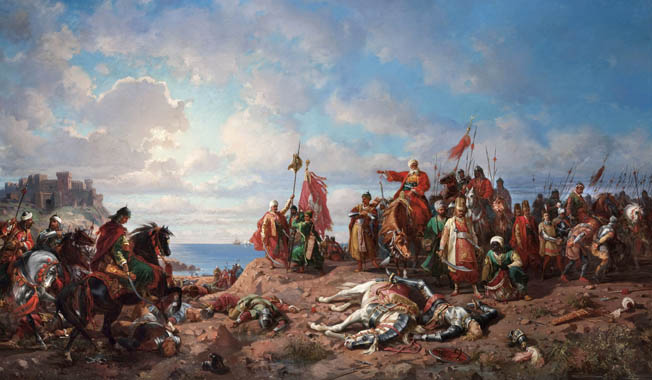
Sultan Murad besieged the Serbian castle of Szendro in June 1439. Serbia’s ruler, the despot Djuradj Brankovic, fled to Hungary and left the defense of Szendro to his sons. Hunyadi took the fight to the Ottomans by raiding into the Ottoman-Bulgarian district of Vidin. King Albert, for his part, tried to muster an army at Titel but the nobles did not heed his call. Unruliness and dysentery decimated the army. In August 1439 Szendro fell; the sons of Brankovic were captured and blinded. The sul- tan left a garrison and returned to Edirne for the winter. Hunyadi successfully ambushed Szendro’s commander, Bey Iszhak, who was returning to Szendro from a raid. Hunyadi’s men-at-arms attacked frontally while his cav- alry circled to strike at the enemy flanks.
When King Albert succumbed to dysentery on October 27, 1439, Hunyadi sided with old compatriots, who chose as their king the 15- year-old Wladyslaw III (Ulaszlo I) instead of Albert’s son, Laszlo “Posthumus” born early the following year. Albert’s widow, Queen Elizabeth von Cilli, asserted herself as regent for the infant king. Queen Elizabeth allied herself with 24-year-old Frederick III of the Habs- burgs, Albert’s cousin and newly crowned Ger- man king, and made Frederick Laszlo’s guardian. Hunyadi distinguished himself in the ensuing civil war. By the spring of 1441 many of the queen’s supporters had come over to Wladyslaw. Wladyslaw rewarded Hunyadi by appointing him captain of Belgrade (part of Hungary since 1426) and, alongside Miklos Ujlaki, voivode of Transylvania.
During the Hungarian infighting, Murad unsuccessfully assaulted Belgrade, but he dev- astated the countryside. The Turks bragged that a beautiful girl sold for the price of pair of boots. Hunyadi retaliated by raiding around Szendro, avoiding at trap set by Bey Iszhak and driving the Ottomans back into their fortress.
During the spring of 1442, Mezid Pasha, Bey of Vidin, led 17,000 sipahis (cavalry) into central Transylvania. The panic spread by Mezid’s ravages drew Hunyadi into an ill-prepared engagement at Santimbru. Hunyadi barely escaped but rallied peasant reinforcements and riposted only a few days later. Mezid ordered his best troops to take out Hunyadi. “To kill a lion, his heart must be pierced,” Mezid told his troops, advising them that Hunyadi “wears a silver helmet and carries a shield emblazoned with a raven. Mounted on a white horse, he is always found in the thick of battle.” Fore- warned by a spy, Hunyadi let a volunteer, Simon Kemeny, wear his armor. Kemeny was slain but Hunyadi was left free to lead the attack and defeat Mezid on March 22. A wagonload of severed Ottoman heads was sent back to Buda.
In the late summer of 1442, the sultan bestowed an army tens of thousands upon Sehabeddin, the Ottoman commander-in-chief of Rumelia, the Ottoman Balkan territory. Sehabeddin boasted that the infidel would flee at the sight of his turban and that his sword would bring a rain of blood. Commanding barely 15,000 men, Hunyadi prudently held off from an engagement until Sehabeddin’s sipahis were off looting the countryside. Early in Sep- tember Hunyadi defeated Sehabeddin in a nar- row defile, capturing more than 200 flags and 5,000 prisoners.
Alongside Brankovic, who wanted Szendro and Kosovo back, Hunyadi continued to press Wladyslaw to fight the Ottomans. Cardinal Julian Caesarini mediated between Poland and Frederick to enable Wladyslaw to concentrate on fighting the Turks. Elizabeth agreed to rec- ognize Wladyslaw on the condition that her son was to succeed him and that Wladyslaw marry Elizabeth’s older daughter. Encouraged by Hunyadi, Wladyslaw was free to lead a crusade. With Sultan Murad II having left to fight the emir of Karaman in south-central Turkey, the time seemed right to take the offensive.
By the time Wladyslaw’s army struck into Ottoman territory in the fall of 1443, it had grown to approximately 38,000 men. In addition to the Hungarians and Wladyslaw’s Polish troops, Hunyadi had spent 32,000 gold florins to hire thousands of mercenaries, among them Serbian refugees and 600 Hussite battle wagons. Caesarini brought Czech and Austrian mercenaries. Brankovic’s troops numbered nearly 8,000. Moldavians and Wallachians had joined the ranks as well, including voivode Vlad Dracul II of Wallachia.
The ensuing “Long Campaign” lasted from September 1443 to February 1444. Hunyadi wrote to Ujlaki, who had yet to join his troops: “A great many Bosnians, Bulgars, Serbs, and Albanians are constantly arriving in our camp, bringing all sorts of presents.” Hunyadi led the vanguard south into the valley of the River Morava. At night Hunyadi surrounded a 2,000-strong Turkish detachment, scattering them in a surprise attack in the morning. After capturing Nis, Hunyadi was faced by the approach of several large Ottoman armies. Hunyadi defeated them all in less than 48 hours. Returning victoriously from Anatolia, Murad confronted and was defeated by Wladyslaw and Hunyadi at Snaim.
Murad adopted a scorched-earth strategy. The mild weather turned to frosty cold. Food and fodder dried up. The Ottomans felled trees to block the mountain road and rolled boulders down on the Hungarians. Wladyslaw’s army was forced to turn back. Kasim Pasha, Sehabeddin’s successor as governor of Rumelia, led the Ottoman troops in a cautious pursuit. Brankovic’s rear guard feigned flight, drawing Kasim into Hunyadi’s ambush. The Ottomans were scattered and Kasim captured. Murad sent envoys, offering a long-term truce.
Wladyslaw and Hunyadi’s victory was celebrated throughout the Christian world. The debate on whether to continue the war dragged through the summer of 1444. At Szeged, Wladyslaw agreed to a peace treaty. Murray paid 100,000 florins to Wladyslaw and returned Serbia to Brankovic. A grateful Brankovic awarded Hunyadi a number of Serbian estates. Hunyadi now ruled more than 25 castles, 30 towns, and 1,000 villages.
The peace was not to last. Incited by the war-mongering Caesarini, Wladyslaw declared war on August 4, 1444. The time seemed favorable. One reason was that Murad was back in Ana- tolia; another was that the Venetians promised that their fleet would block his return. Hun- yadi’s troops looted their way from Transylvania through Wallachia, infuriating Vlad Dracul, who nevertheless joined Wladyslaw’s army. By the time the army was united near Nicopolis in October, it only numbered 20,000 men. Dracul mocked that the sultan’s hunting entourage was bigger and implored Wladyslaw to turn back. Hunyadi accused Dracul of conspiring with the sultan. Insulted, Dracul left the army, leaving his son in command of his Wallachians.
Hoping to be reinforced by Byzantines and Albanians, the army continued east along the Danube. On November 9, 1444, the Hungari- ans reached Varna on the Black Sea where dis- astrous news arrived. Murad had crossed the straits at night, having been ferried across by the Genoese for one gold florin per soldier. Hungarian scouts saw no sign of the expected Byzantines. Even worse, Brankovic, who now desired good relations with the sultan, used his troops to prevent the arrival of Skanderbeg’s Albanians. By nightfall, the campfires of Murad’s army, which numbered more than 60,000, flickered in the distance.
The Battle of Varna began on November 10, 1444. The Christian army fended off Ottoman cavalry, and Hunyadi led his cavalry in pursuit. With only his janissaries holding their ground, Murad contemplated flight. Ottoman historian Nesri described what happened next. A grizzled, veteran janissary stopped Murad’s horse and implored him to rally his men. “Sultan, admirable lord, Ottoman Murad, get off your horse this minute to die with us and we with you,” the janissary said.
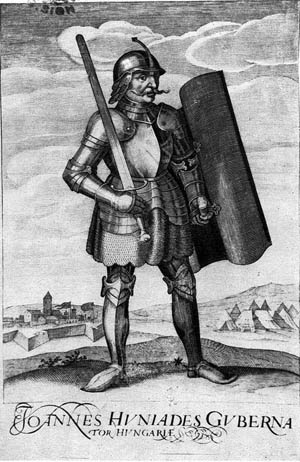
Victory all but in his grasp, Wladyslaw entered the fray with 500 cavalry. The young king smote through the janissaries, but then his horse was killed under him. Wladyslaw was hurled to the ground where a janissary swooped off his head and hoisted it on the tip of his lance. Galloping back to battle, Hunyadi tried in vain to stem the growing panic. The sun set upon a vanquished Hungarian army. Hun- yadi escaped the Ottomans, but on his way back to Hungary he was captured by Dracul. Dracul fortunately released Hunyadi when the royal council threatened war.
Laszlo V was chosen as Wladyslaw’s successor, although the boy king remained under King Frederick’s protection. Hunyadi continued to fight the Ottomans, scoring a minor victory at Little Nicopolis in 1445. He strengthened royal authority by restoring its finances and cleaning up corruption. Wages of miners were increased, the growth of free towns was promoted, and roads were improved.
During the 1446 June diet, the Hungarian nobles chose Hunyadi to act as regent for the absent Laszlo. During the same summer, Dracul was ousted by the rival noble Dan. Dracul fled to Murad II, and with the aid of Ottoman troops drove Dan out of Wallachia. Hunyadi came to Dan’s aid and annihilated Dracul’s forces at the Jalomitsa River. Dracul and his elder son were beheaded and his younger son blinded. Among Vlad’s surviving children was Vlad III the Impaler, of Bram Stoker’s Dracula fame.
Hunyadi intended to lead another great cam- paign against the Ottomans. He gained the sup- port of Prince Dan with 8,000 men. Brankovic, however, sided with the sultan. When Pope Eugenius IV advised Hunyadi to postpone the campaign, he objected to the proposal. “We have had enough of our men enslaved, our women raped, wagons loaded with the heads of our people, the sale of chained captives, the mockery of our religion,” Hunyadi wrote in a letter dated September 8, 1448. “We shall not stop until we succeed in expelling the enemy from Europe.”
In the fall of 1448, Hunyadi’s 24,000-strong army marched to southern Serbia’s Kosovo- Polje where he waited for Albanian reinforce- ments. But Murad showed up first on October 17 with 60,000 men. The stage was set for the Second Battle of Kosovo. The following day cavalry of both sides skirmished. Hunyadi attacked the sultan’s camp that night but was forced back when the Ottomans rallied. The next morning, Murad threw in his rested Anatolian cavalry. Hunyadi’s heavy cavalry smashed through the janissaries and reached the baggage camp, but it was surrounded and destroyed. First the Wallachians, then the whole Hungarian army collapsed into flight. They left behind 17,000 casualties but inflicted nearly twice as many on the Ottomans.
While fleeing through Serbia, Hunyadi escaped temporary capture by Ottoman raiders, who fortunately did not recognize him. Brankovic captured Hunyadi, and the Hungarian was only released after he had ceded land to Brankovic.
In 1452, the wily Frederick, now also Holy Roman Emperor, released Laszlo V to Hungary. Hunyadi resigned his regency in a show of loy- alty, and Laszlo rewarded him by appointing him chief captain of all of Hungary. On May 29, 1453, came the news that Constantinople had fallen to Mehemed II “The Conqueror,” the son and successor of Murad II. King Laszlo showed little concern, partying at Prague for a year after being crowned King of Bohemia in October 1453. Mehemed invaded Serbia in 1454. He besieged Szendro despite Brankovic’s attempts at appeasement. Mehemed gave up the siege, but he left behind a large detachment under Firuz Bey. Hunyadi smashed the Ottoman detachment in a surprise attack at dawn. Brankovic nevertheless became the sultan’s vassal.
When Mehmed threatened Belgrade in 1456, Hunyadi was one of the few ready to fight the Ottomans. Laszlo V, by comparison, fled Buda for Vienna. He did this ostensibly to go on a hunting trip. Hunyadi, however, gained the support of the 71-year-old Franciscan friar Saint John (Giovanni) of Capistrano, whose zealous devotion would be a greater boon than any king. Capistrano rallied the people with a vigor that defied his old age. “Behold! Unarmed peasants, blacksmiths, tailors, carters, artisans, and students march at the head of armies, believing themselves to have been called by God to great deed,” related 15th-century historian Ebendorffer. They gathered at Szeged, armed with rusted swords, straightened scythes, clubs, and a few bows and arrows. Capistrano and the first peasant crusaders arrived at Belgrade before Hunyadi and just before the Ottomans.
Mehmed laid siege to Belgrade on July 2 with an army of 50,000. Located at the confluence of the Sava and the Danube, the fortress of Belgrade boasted formidable natural defenses that supplemented its man-made walls and moat.
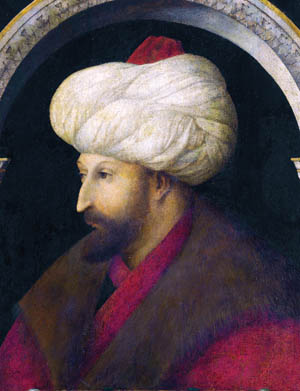
The Ottoman army had dwindled considerably as a result of the plague its soldiers brought over from Asia. Mehmed blockaded Belgrade from land and water. He then proceeded to bombard the stronghold with 300 cannons and massive stone-throwing catapults.
Hunyadi brought 16,000 men and 200 ships to relieve the beleaguered city. On July 14 Hunyadi defeated the Ottoman fleet by squeezing it between his own and Szilagyi’s smaller fleet. Hunyadi then led 3,000 of his men into the fortress, deploying the remainder on the opposite bank of the Sava. After Mehmed’s cannons had nearly demolished the walls, the janissaries launched all-out assault on July 21. By nightfall the Turks were fighting in the streets. Hunyadi ordered his men to throw tarred wood and blankets saturated in sulfur into the moat. Set alight, the moat erupted in flames and burned the Ottomans trying to gain the walls. The isolated janissaries in the city were slaughtered.
On July 22 a handful of emboldened crusaders made their way through the partly demolished walls. Exchanging insults with the Ottomans, their numbers grew. Capistrano got caught up in the growing furor and incited the masses to attack. Hunyadi sallied forth to join the confused melee. The fighting lasted until dusk. “Even the dead climbed out of the breaches in the wall, swarmed out of the fortress and fell upon the army of Islam,” wrote Ottoman historian Tursun Bey. Both sides drew apart, but the Turks knew they were beaten and retreated.
The victory at Belgrade brought great fame to the victors. There were calls for Capistrano’s beatification, and Pope Calixtus called Hunyadi “the most outstanding man the world had seen in 300 years.” Hunyadi did not survive his greatest triumph for long. He passed away on August 11, 1456. In all likelihood, he succumbed to the plague that had spread from the Ottoman camp into the city. With his last words, the dying Hunyadi pleaded for the continued defense of Hungary and Christianity.
Hungary’s deeds elevated him into the realm of legend to become Torokvero, the “scourge of the Turks.” Even in defeat, he led his troops well and carried on with undiminished resoluteness. Hunyadi fought his way through mil- itary battlefields and Machiavellian politics to become the de facto ruler of Hungary in all but name. Hunyadi laid the groundwork for his younger son, Matyas, who after Laszlo V’s unexpected death in November (rumored to be by poison) became one of the great kings of the Renaissance. Hunyadi’s great victory at Belgrade safeguarded Hungary from the Turks for decades. He is remembered and celebrated in Hungary to this day.
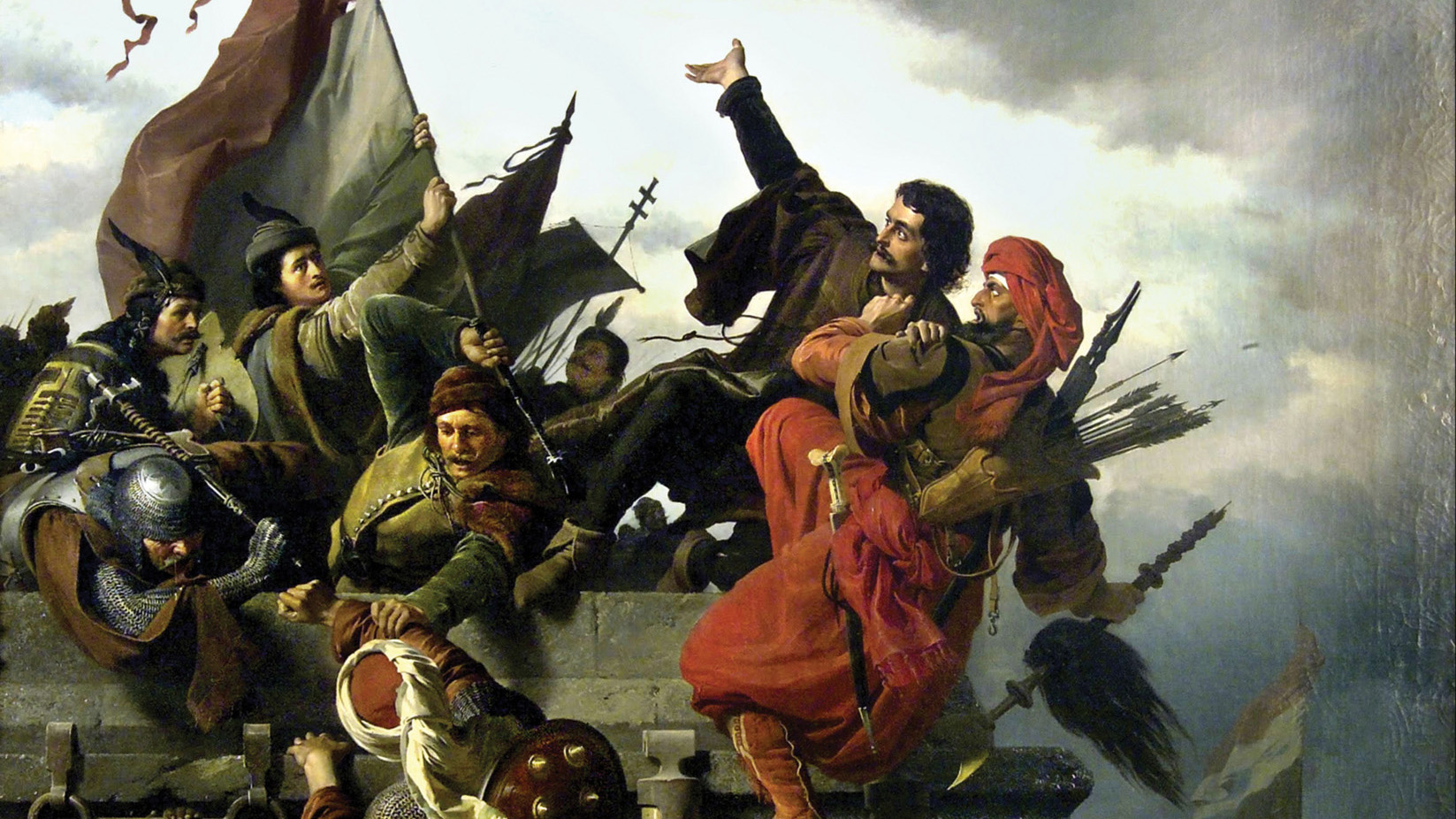
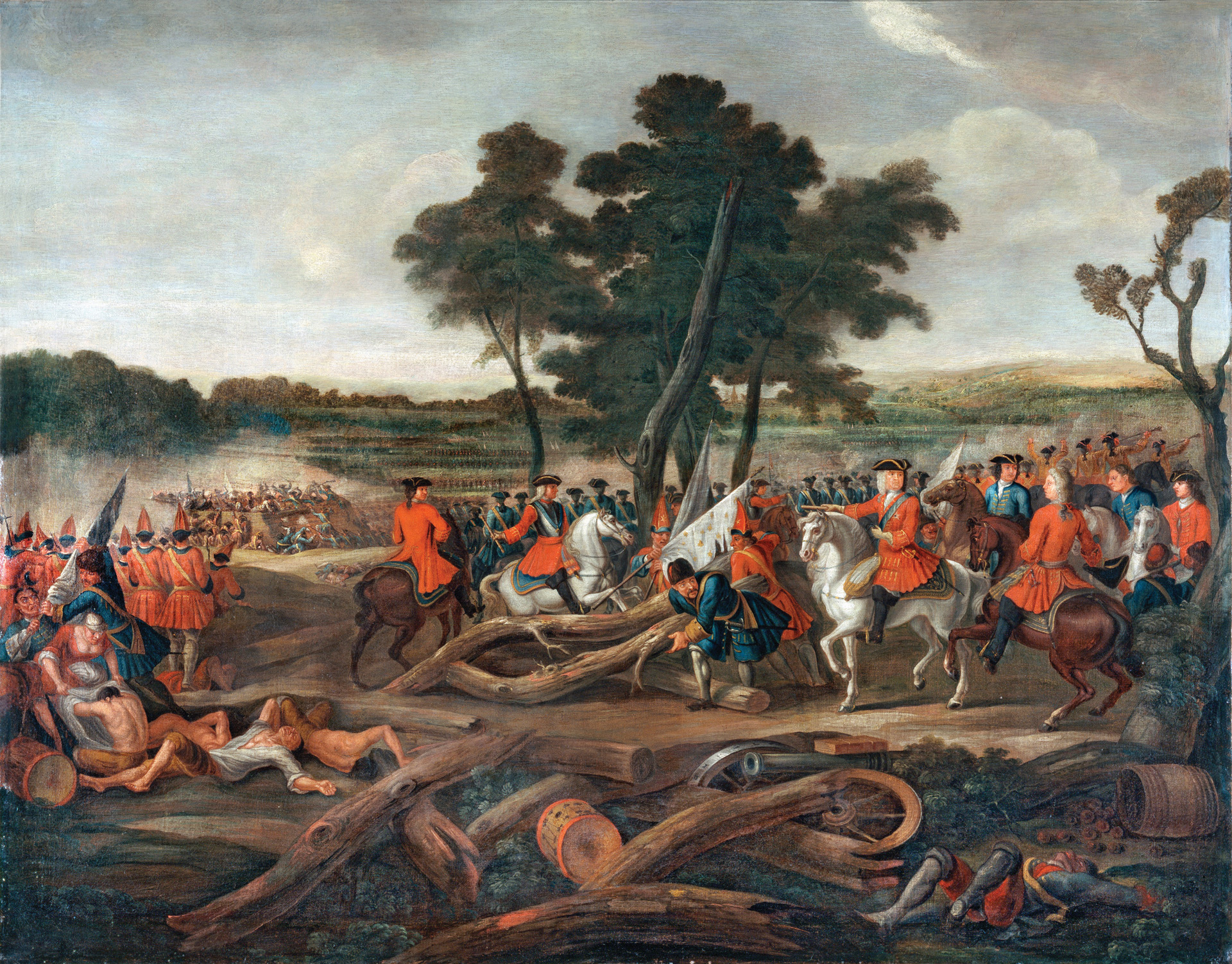
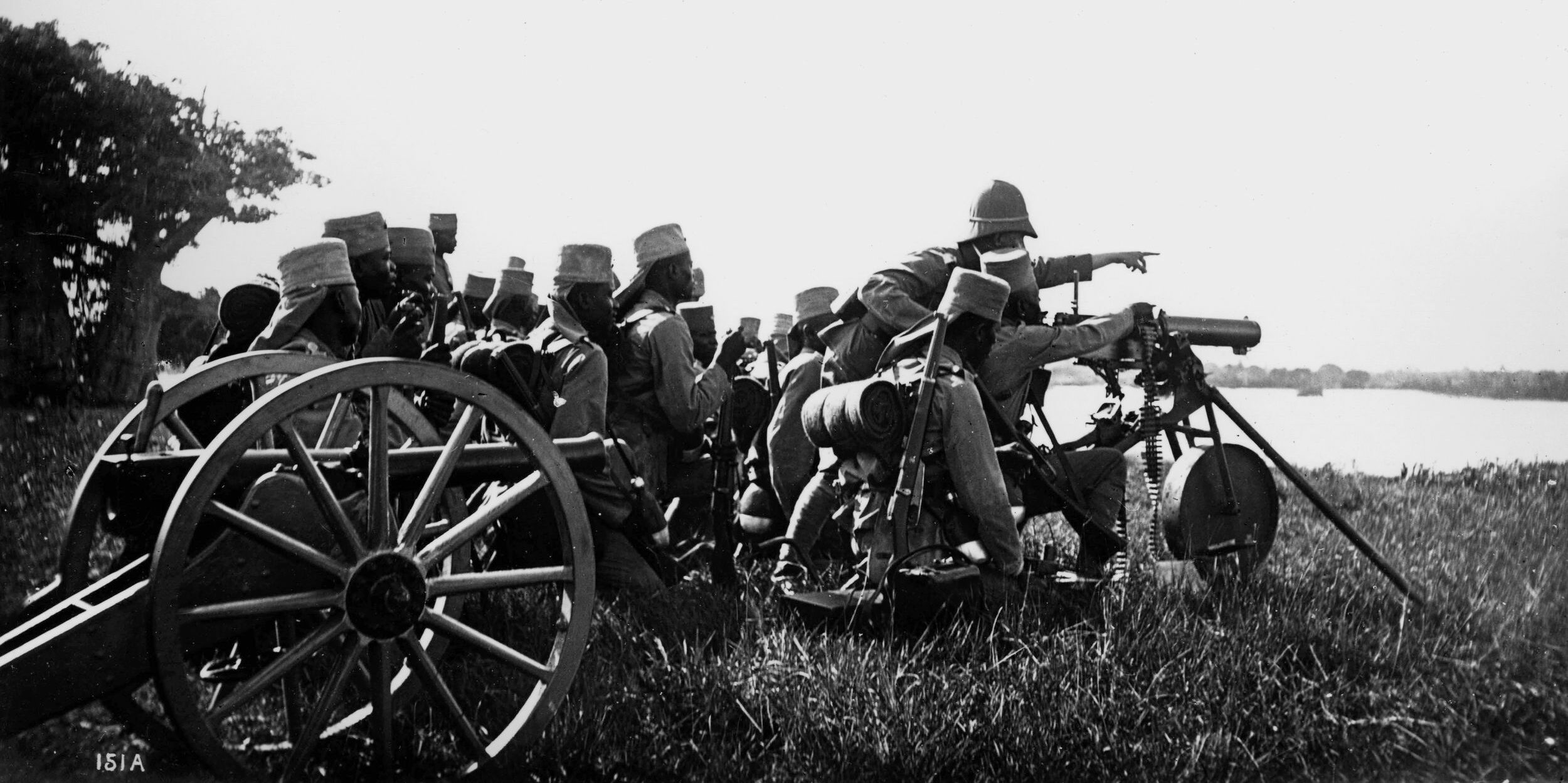
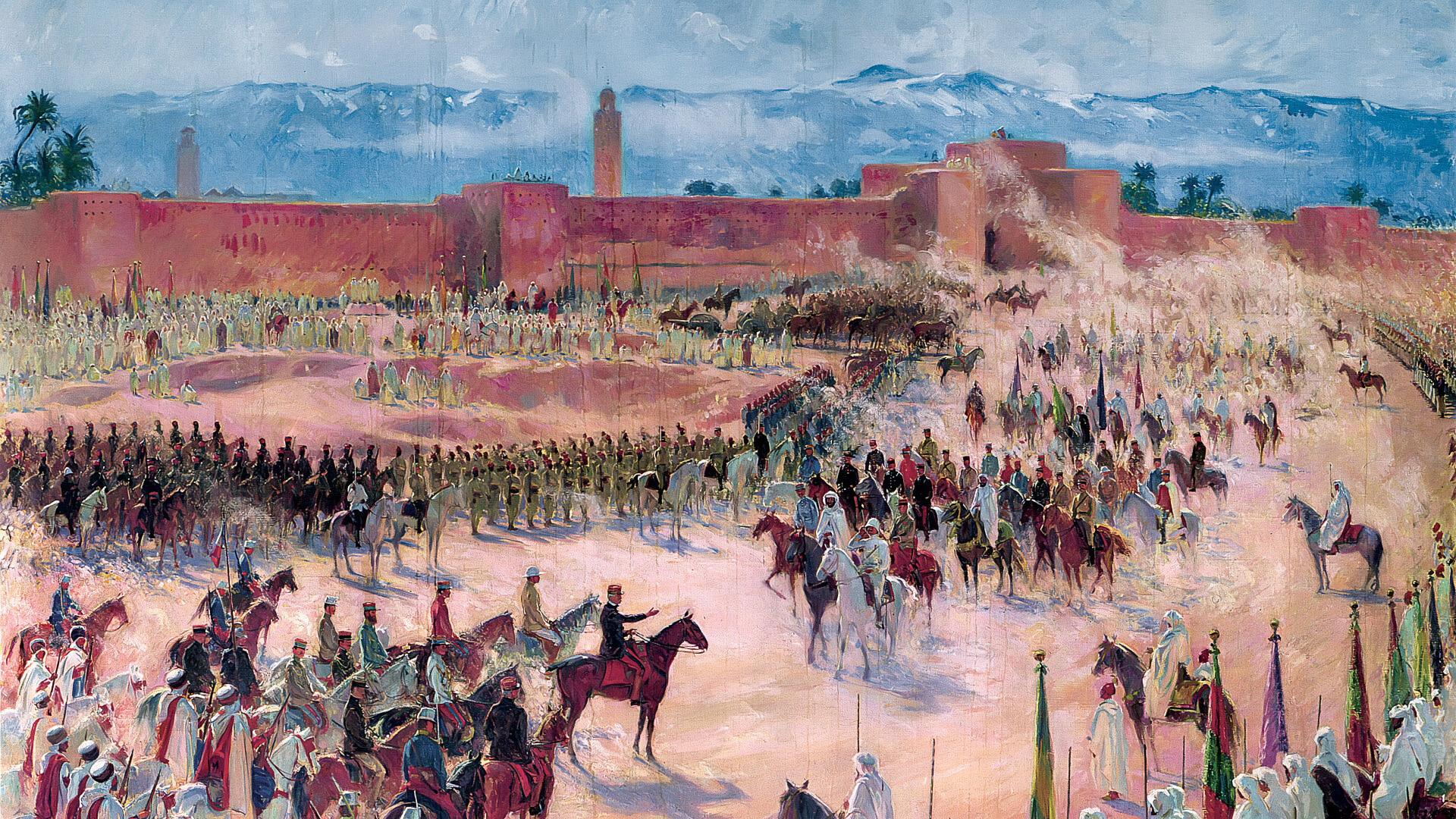
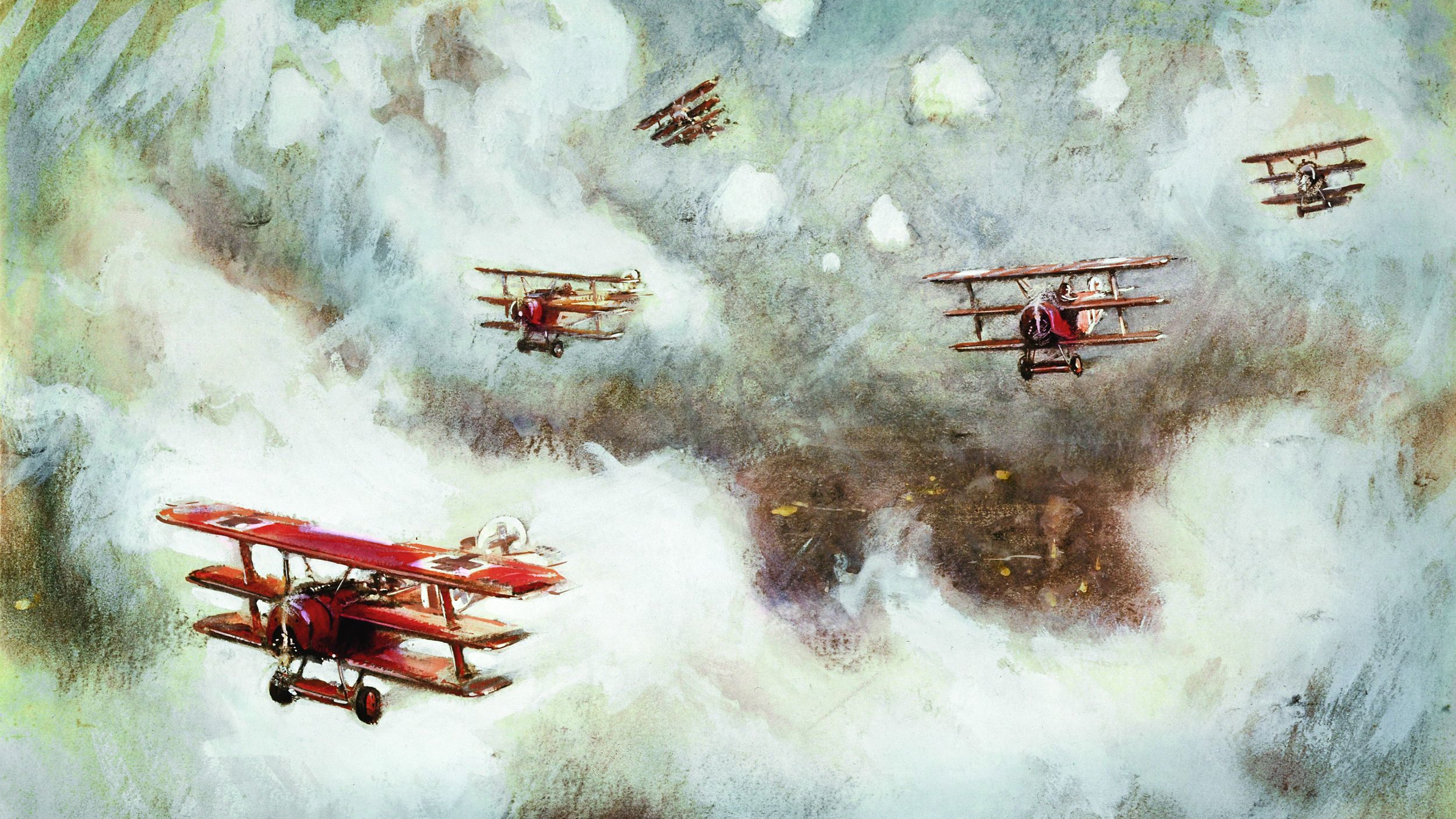

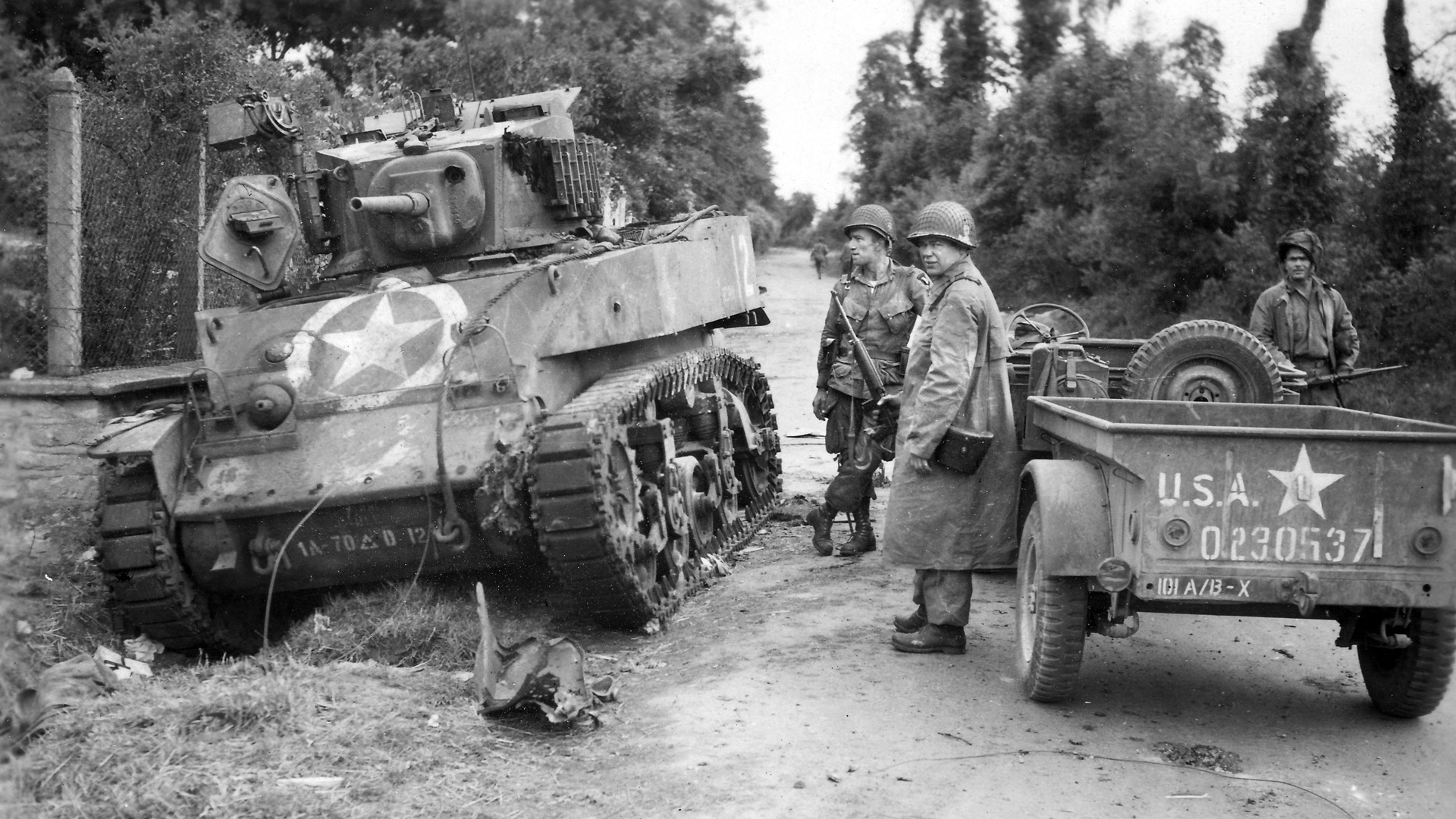
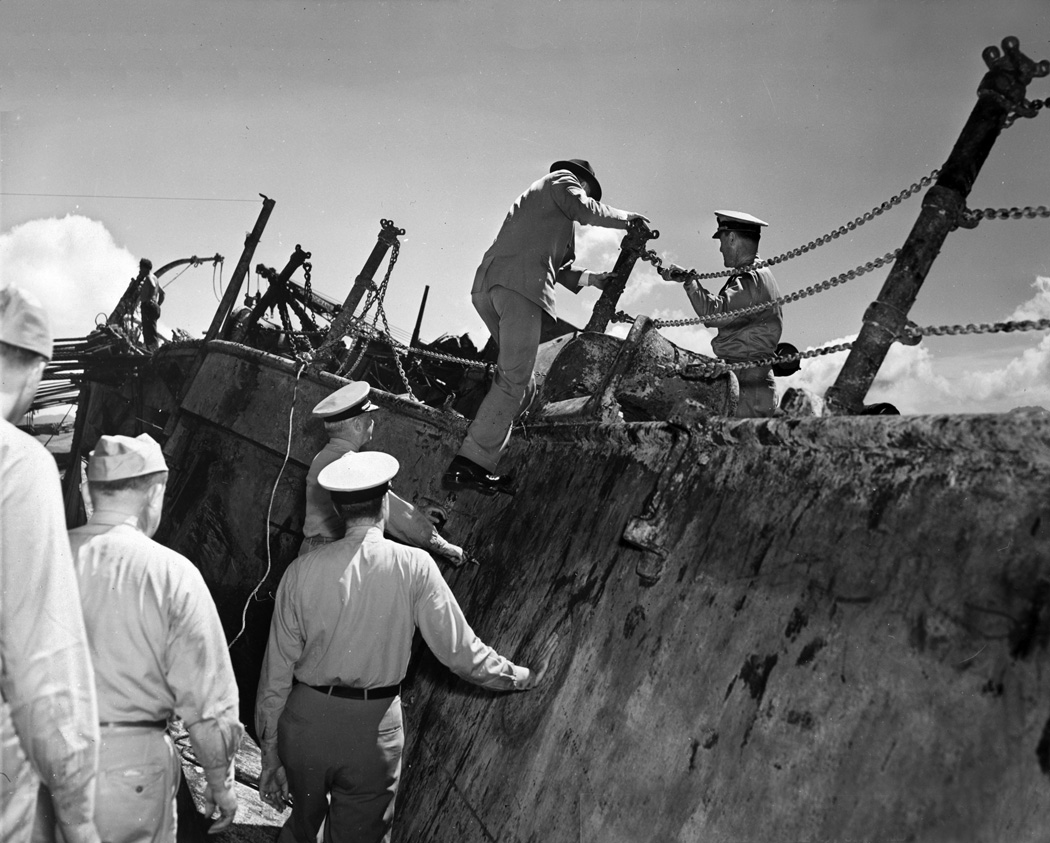
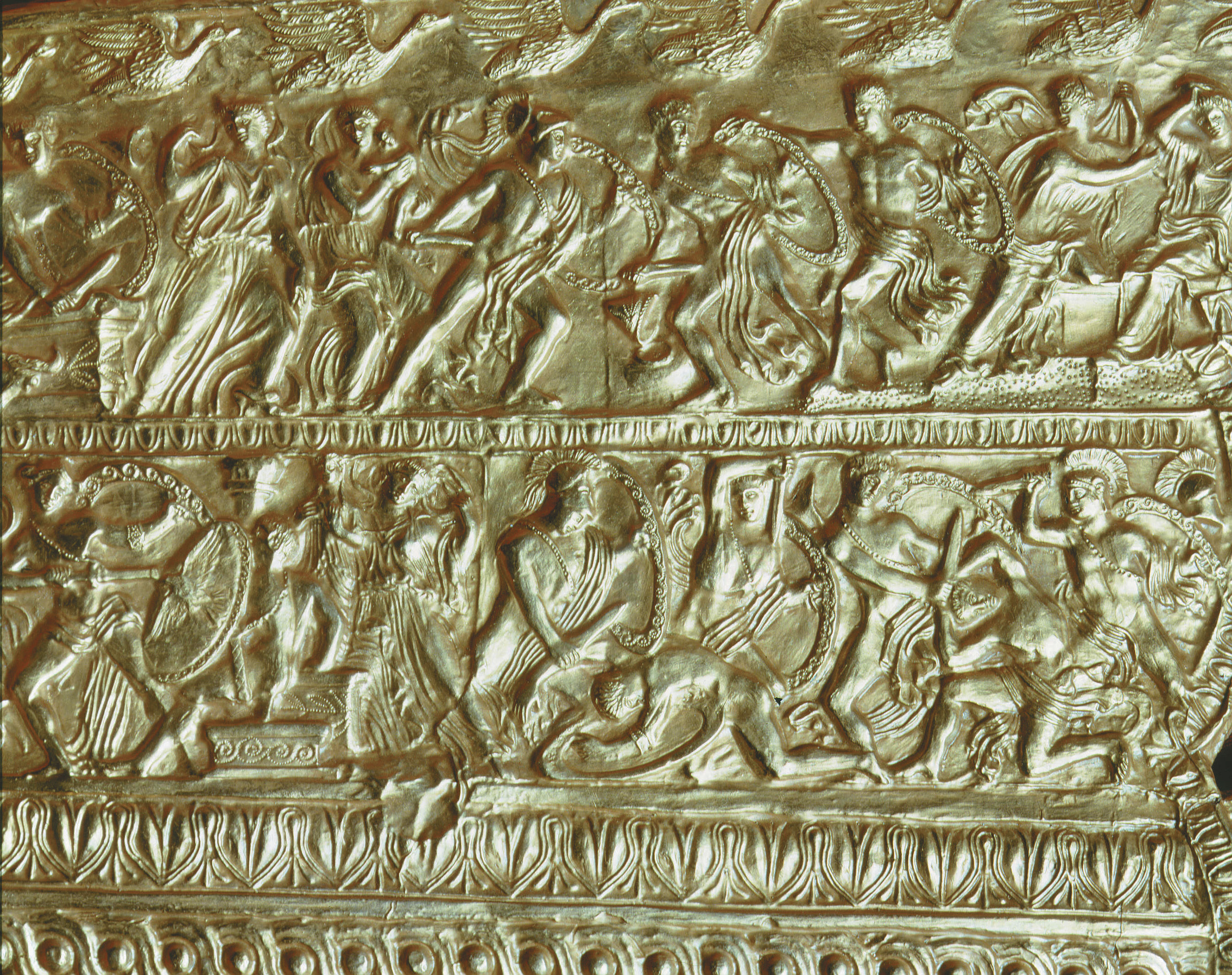
It would be most helpful if such articles told us a bit more about the structure of the Hungarian army and included some maps.